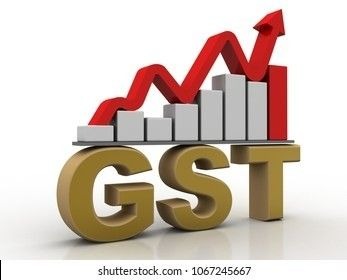
How to Handle GST Notices the Right Way
Getting a GST notice can worry any business owner. It might be about a delay, a mismatch, or something missing in your returns. These notices often arrive without warning – and they must be handled carefully.
The good news? If you follow the right steps, dealing with a GST notice doesn’t have to be difficult.
In this blog, we’ll explain the types of GST notices, what to do when you get one, how to respond properly, when to take help, and how to avoid getting more in the future.
1) Types of Notices Issued Under GST
The GST department sends different types of notices depending on the issue they find. Some of them are:
1. Show Cause Notice (SCN): Issued when the department believes there’s a shortfall in tax payment or a compliance issue. It asks the taxpayer to explain why action shouldn’t be taken.
2. Notice under Section 61: Related to scrutiny of returns. This happens if your return shows unusual patterns or figures that don’t match with past records or third-party data.
3. Notice under Section 62: Sent when a return hasn’t been filed despite reminders. The officer may assess tax liability on their own.
4. Notice under Section 73 or 74: These are serious notices usually sent for non-payment or short payment of tax. Section 74 applies when there’s suspicion of fraud or willful misstatement.
5. Notice for mismatched input tax credit (ITC): If the ITC claimed doesn’t match supplier records, the department may raise questions.
6. Notice under Section 67: Issued in cases of suspected tax evasion, leading to inspection or search.
7. REG-03: Clarification during GST registration process.
FOR YOU: How to Effectively Respond to Income Tax Notices
2) Initial Steps Upon Receiving a GST Notice
The first reaction many businesses have is panic or confusion, especially if the language in the notice is formal or technical. But it’s important to stay calm and take a structured approach.
1) Read the entire notice carefully: Note the reason for the notice, the section under which it’s issued, and the last date to reply.
2) Check supporting documents: Go through your returns, challans, ledgers, and invoices to understand if there’s a genuine error or mismatch.
3) Download related reports: Use the GST portal to access your GSTR-2A, 2B, and other relevant forms to cross-check what the department sees versus what you’ve filed.
4) Avoid delay: Even if you need time to prepare the response, acknowledge the notice (if applicable) to show intent to comply.
3) Crafting a Comprehensive and Compliant Response
Once you understand the notice and collect the required documents, the next step is writing your response.
- Be clear and to the point: Address each issue raised in the notice with facts and figures. Avoid long-winded explanations.
- Attach all supporting documents: Invoices, return summaries, payment proofs, and reconciliation statements can help strengthen your reply.
- Use simple and formal language: You don’t have to use legal terms, but your reply should be professional and respectful.
A well-prepared response shows that your business takes compliance seriously, and in many cases, that’s enough to close the matter without penalty.
4) Role of GST Consultants in Managing Notices
Not every business has an in-house tax team. And even for those that do, GST rules change often, and interpretation of notices can be tricky. This is where GST consultants come in handy.
1. Understand the technical details of the notice
2. Cross-check your filings and do reconciliation
3. Draft replies that cover all the required points
4. Guide you on whether to pay, contest, or seek clarification
5. Represent you during departmental hearings or follow-ups, if needed
Consultants help save time and avoid mistakes that may lead to penalties or additional notices. Their experience with how officers handle similar cases also help prepare stronger replies.
5) Preventative Measures to Minimise Future Notices
Getting a GST notice once is not the end of the world. But getting one often? That’s a problem—and usually points to gaps in internal processes.
- File returns on time: Timely GSTR-1 and GSTR-3B filing is one of the simplest ways to avoid scrutiny.
- Do monthly reconciliation: Match GSTR-2A/2B with your purchase register to spot mismatches early.
- Avoid fake or suspicious vendors: If your suppliers aren’t filing properly, your ITC claim may be questioned.
- Keep all records clean and ready: Store digital and physical copies of key documents like invoices, challans, and agreements.
- Get a compliance check every quarter: Having a GST professional review your filings regularly helps catch problems before the department does.
Final Thoughts
GST notices aren’t something to panic about – but they do need quick and careful attention. A timely, clear response with help from experts like Master Brains Consultancy can protect your business from fines and future trouble.
If you’ve got a notice, don’t delay. Act early, stay prepared, and show that your business is on the right track.
Leave Your Comment